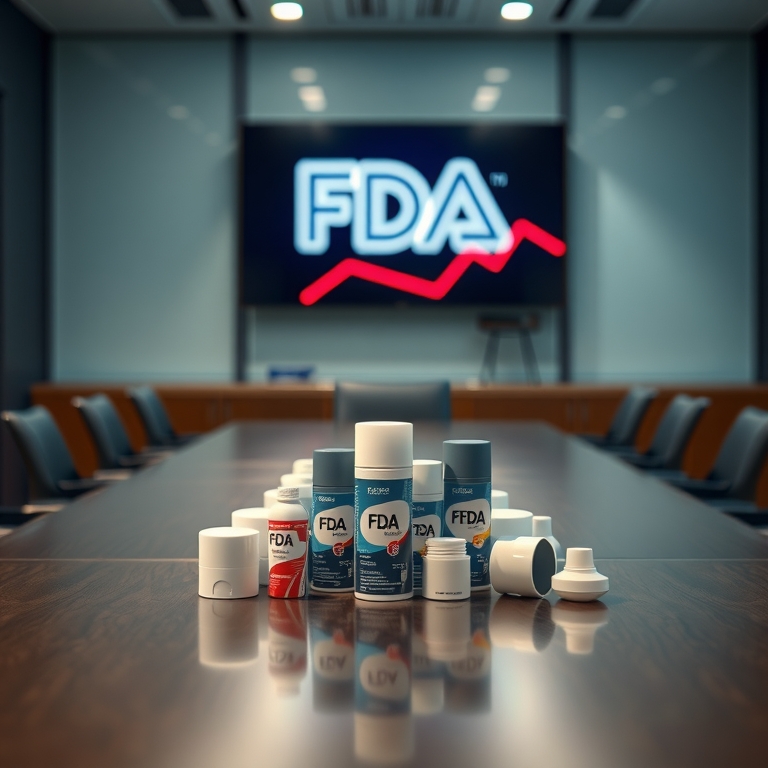In a move that has sent ripples across both the consumer goods market and health safety sectors, the U.S. Food and Drug Administration (FDA) has issued a recall of a widely popular deodorant brand, citing pressing safety concerns. This recall, which affects millions of products already on the shelves and in homes across the country, highlights the critical balance between consumer trust and product safety in today’s fiercely competitive marketplace. As the deodorant in question has long been a staple in personal hygiene routines, the implications of this recall stretch beyond immediate health risks to broader concerns about regulatory oversight, corporate responsibility, and consumer confidence.
The recall was prompted by findings that raised alarms about the safety of certain chemical compounds used in the formulation of the deodorant. According to sources familiar with the matter, routine testing identified levels of a potentially harmful substance that exceeded acceptable safety thresholds. While the specific ingredient has not been disclosed publicly, insiders suggest that it may relate to a preservative or fragrance component common in many personal care products. The FDA’s decision to act swiftly underscores the potential health risks posed to consumers, ranging from skin irritation to more severe systemic effects, depending on the extent and duration of exposure.
For the deodorant manufacturer, this recall represents a significant setback, both financially and reputationally. The brand, which has built its market presence on promises of reliability and safety, now faces the dual challenge of addressing the immediate logistical hurdles of a large-scale recall while also managing the long-term impact on brand perception. In a statement released shortly after the FDA’s announcement, the company expressed its commitment to consumer safety and pledged full cooperation with regulatory authorities. The statement also assured customers that efforts were underway to rectify the situation, including reformulations and enhanced testing protocols to prevent future occurrences.
This incident serves as a poignant reminder of the complexities involved in product safety and the rigorous standards that companies must meet to ensure public health. It also highlights the crucial role of regulatory bodies like the FDA in safeguarding consumer interests. The agency, tasked with the oversight of food, pharmaceuticals, and personal care products, relies on a combination of scheduled inspections, surprise audits, and consumer reports to monitor compliance. In this case, the swift identification and recall of the affected deodorant reflect the efficacy of these mechanisms, yet they also point to the ongoing challenges in detecting and responding to potential hazards in a timely manner.
For consumers, the recall has sparked concerns about the safety of other personal care products and the integrity of the supply chains that bring these items to market. In an era where transparency and traceability are increasingly demanded by the public, this incident may lead to heightened scrutiny of ingredient sourcing and manufacturing processes. It could also catalyze a shift towards more natural or organic alternatives, as consumers seek reassurances of safety and sustainability in their purchasing decisions.
Meanwhile, retailers are grappling with the immediate logistical challenges posed by the recall. With inventory management systems already strained by fluctuating supply chain dynamics, the sudden need to remove and replace affected products adds another layer of complexity. Retailers must also navigate the delicate task of communicating effectively with customers, balancing transparency about the recall with reassurances about the safety of their remaining product offerings.
The broader implications of this recall extend to discussions about regulatory frameworks and industry standards. As the personal care industry continues to evolve, driven by innovation and changing consumer preferences, the need for robust, adaptive regulatory oversight becomes ever more apparent. This incident is likely to fuel ongoing debates about the adequacy of current regulations and the potential for reform to better address emerging risks associated with new ingredients and technologies.
In the immediate term, however, the focus remains on the affected consumers and the steps being taken to ensure their safety. The FDA has issued clear guidance on how individuals can identify and dispose of the recalled products, and the deodorant manufacturer has established dedicated hotlines and online resources to assist with questions and concerns. Both the agency and the company have urged consumers to discontinue use of the products immediately and to seek medical advice should they experience any adverse reactions.
As the recall unfolds, it serves as a case study in corporate crisis management and regulatory response. For the deodorant brand, the path to restoring trust will undoubtedly require transparency, accountability, and a demonstrable commitment to safety. For the FDA, the incident underscores the ongoing need for vigilance and the continual refinement of its oversight capabilities in an ever-evolving market landscape.
In conclusion, the FDA’s recall of this popular deodorant brand is a timely reminder of the complexities and responsibilities inherent in consumer product safety. As stakeholders across the industry work to address the immediate concerns and prevent future occurrences, this incident may ultimately serve as a catalyst for positive change, driving improvements in safety standards, regulatory frameworks, and consumer awareness. The road ahead will require collaboration, innovation, and a steadfast commitment to protecting public health—a challenge that, while formidable, is essential to maintaining trust in the products that play such a pivotal role in our daily lives.

Leave a Reply